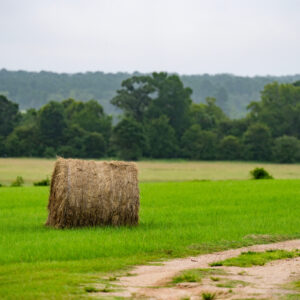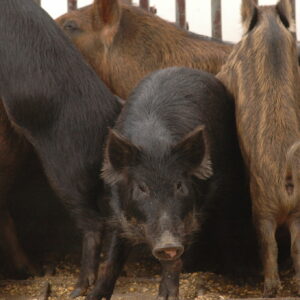Roundup Ready Variety by Roundup Ultra Treatment Trial
A small-plot trial with nine High Plains varieties with varying Roundup Ultra treatments was initiated in 2000. This trial was established to document the effects of Roundup Ultra applications on lint yield and other characteristics. Dr. John Gannaway and Dr. Wayne Keeling cooperated on this study. Due to producer questions concerning the “sensitivity” of Roundup Ready varieties to broadcast over-the-top (OT) applications, several varieties were included. The experimental design was a split plot with 4 replications, with variety as the main plot and 5 Roundup Ultra application regimes as the subplot. Roundup Ultra treatments included: 1) untreated control; 2) grower standard treatment consisting of 1 qt/acre applied OT at the 4 node stage plus an additional 1 qt/acre applied post-directed (PD) at the 14-node stage using a Red Ball hooded sprayer which was adjusted to minimize spray contact on lower leaves; 3) 1 qt/acre applied OT at the 8-node stage; and 4) 1 qt/acre applied OT at the 14-node stage; and 5) 1 qt/acre applied at the 4 nodes above white flower (NAWF) or cutout stage. The OT treatments were applied to the center 2 rows of the 4-row subplots using a compressed air spray system calibrated at 10 gpa and 22 psi. Tee-Jet 8002 flat fan nozzles were used a with 2 nozzle/row configuration. The PD treatments were applied to the center 2 rows using a Red Ball hooded sprayer calibrated at 10 gpa and 24 psi, and adjusted to result in minimal drift to lower leaves. The project was maintained weed-free to determine the physiological effects of Roundup Ultra on cotton production and other characteristics. Varieties were planted using a cone planter on May 24. The project was furrow irrigated 4 times during the growing season. Harvest was accomplished using a John Deere 482 plot harvester on December 4. Grab samples of stripped cotton were obtained at harvest and were ginned at the Ginning Laboratory at the Lubbock Center. Lint samples were submitted to the International Textile Center for HVI analysis.
Main Plot: 20 rows x 45 ft
Subplot: 4 rows x 45 ft
Applications:
Grower standard: June 23 (4 leaf OT)
Grower standard: July 28 (post-directed 14 node)
8 node stage: July 11 (OT)
14 node stage: July 28 (OT)
4 NAWF stage: August 17 (OT)
All applications: Roundup Ultra @ 1.0 qt/a which included 17 lbs/100 gal spray-grade ammonium sulfate
Results
When averaged across varieties and replications (for a total of 36 observations per Roundup Ultra treatment level), lint yield, lint turnout, boll weight, and micronaire were not significantly affected by the grower standard treatment when compared to the untreated check. However, the 8-node OT application reduced yields by 19%, lint turnout by 12%, boll weight by 13%, and micronaire by 12%. The 14-node and 4 NAWF treatments also significantly reduced yield compared to the untreated check, by 10% and 5%, respectively. Lint percentage was significantly reduced by the 14-node OT treatment, however the 4 NAWF treatment had no effect on this characteristic. Boll weights were not significantly reduced by the 14-node or 4 NAWF treatments, when compared to the untreated check. Micronaire was slightly higher for the 14-node OT treatment when compared to the untreated check, but this difference was negligible in terms of impact on lint value.
Roundup Ready Variety by Roundup Ultra Treatment Project – 2000 (PowerPoint Slide Show)





